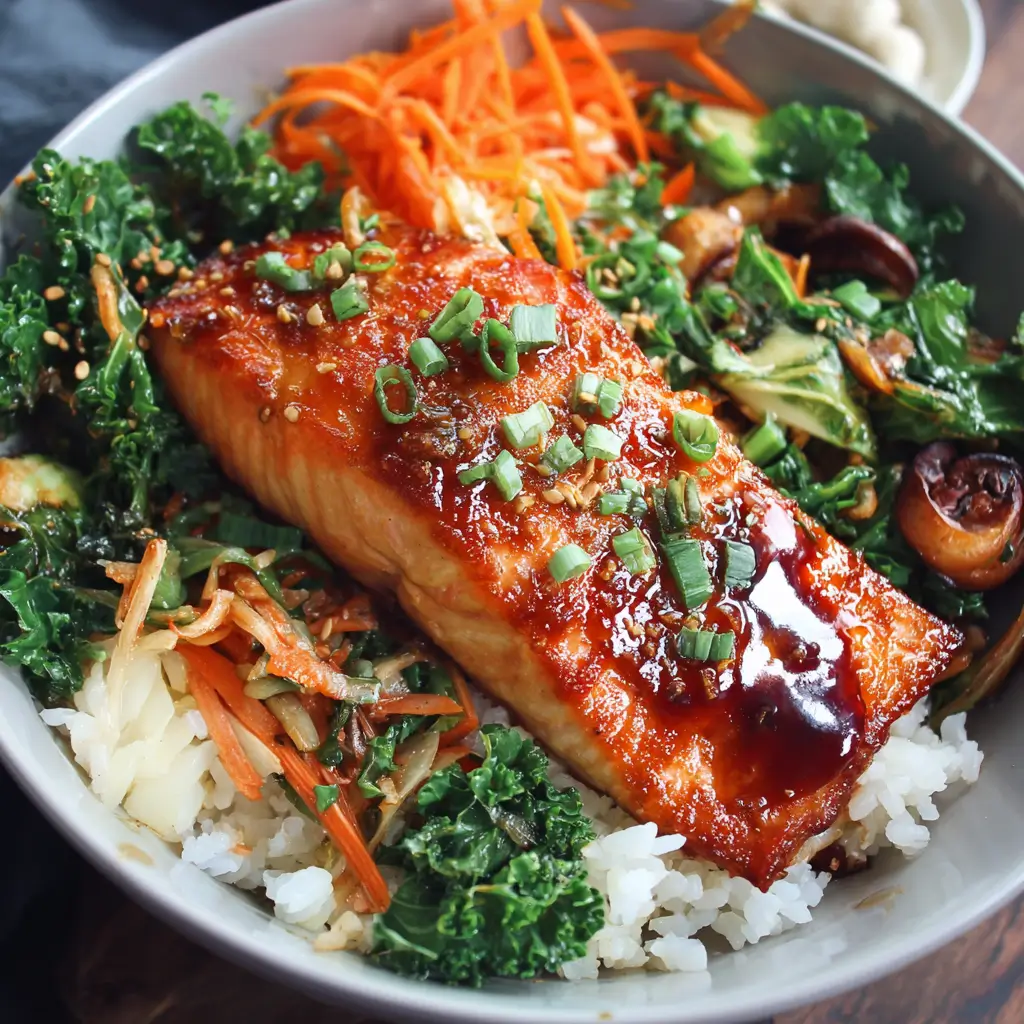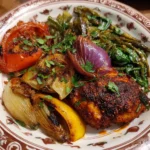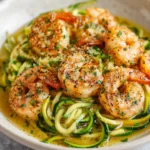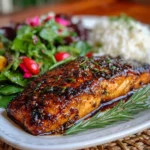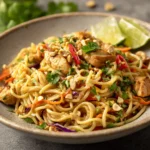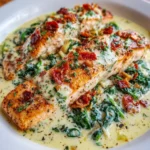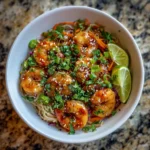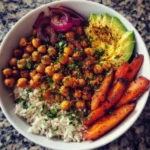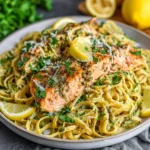Miso Glazed Salmon Bowls: A Flavorful Fusion of Umami and Freshness
If you’re searching for a dish that effortlessly balances rich umami flavor, healthy proteins, and vibrant vegetables, look no further than miso glazed salmon bowls. This modern culinary creation brings together the deep, savory taste of fermented miso paste with tender, flaky salmon, all nestled atop a bed of fluffy rice and fresh, colorful toppings. Whether you’re cooking for a weeknight dinner or meal prepping for busy days ahead, this bowl is both satisfying and nourishing.
The History of Miso Glazed Salmon
The roots of miso glazed salmon trace back to traditional Japanese cuisine, where miso—a fermented soybean paste—has been used for centuries as a staple seasoning. Miso’s use in glazing fish can be attributed to regional dishes from northern Japan, particularly Hokkaido, where cold climates favored preservation methods like fermentation. The practice of marinating and broiling fish with miso gained popularity as a way to enhance flavor and preserve freshness.
In the 20th century, chefs began refining the technique, using white (shiro) miso for its mild sweetness, which pairs perfectly with delicate fish like salmon. The dish gained international acclaim in the late 1990s and early 2000s when Japanese-inspired fusion cuisine surged in popularity across North America and Europe. Today, miso glazed salmon is celebrated not only in high-end sushi restaurants but also in home kitchens worldwide, often served over rice bowls as part of a balanced bento-style meal.
Ingredients Breakdown
The magic of miso glazed salmon lies in its harmonious blend of ingredients, each contributing depth, texture, and nutrition:
- Salmon Fillets: Rich in omega-3 fatty acids and protein, choose center-cut fillets with even thickness for consistent cooking.
- White Miso Paste: Offers a sweet, salty, and umami-rich base. Red miso can be used for a bolder flavor, but it’s saltier and stronger.
- Rice Vinegar: Adds brightness and helps balance the richness of the miso.
- Soy Sauce or Tamari: Enhances saltiness and depth; tamari is gluten-free and slightly richer.
- Maple Syrup or Honey: Natural sweeteners that caramelize beautifully during cooking, forming a glossy glaze.
- Garlic and Ginger: Freshly minced for aromatic complexity and subtle heat.
- Sesame Oil: A few drops add nutty aroma and richness to the marinade.
- Steamed Rice: Sushi rice, jasmine, or brown rice form the hearty base of the bowl.
- Fresh Vegetables: Cucumber, avocado, shredded carrots, edamame, pickled radish, and scallions provide crunch and color.
- Garnishes: Toasted sesame seeds, nori strips, microgreens, or chili flakes for finishing touches.
Step-by-Step Recipe
- Prepare the Miso Glaze: In a small bowl, whisk together ¼ cup white miso paste, 2 tablespoons maple syrup, 1 tablespoon rice vinegar, 1 tablespoon soy sauce, 1 teaspoon grated ginger, 1 minced garlic clove, and 1 teaspoon sesame oil until smooth.
- Marinate the Salmon: Place 4 salmon fillets (about 6 oz each) in a shallow dish. Pour half of the miso glaze over the salmon, gently coating each side. Cover and refrigerate for at least 30 minutes (or up to 8 hours for deeper flavor).
- Cook the Rice: While the salmon marinates, rinse 1 cup of short-grain rice under cold water until the water runs clear. Cook according to package instructions (typically 1:1.25 rice-to-water ratio, simmered for 18–20 minutes). Let rest covered for 10 minutes, then fluff with a fork. Optionally, season with a splash of rice vinegar and a pinch of sugar for a sushi-style finish.
- Roast the Salmon: Preheat oven to 400°F (200°C). Line a baking sheet with parchment paper. Remove salmon from marinade (shake off excess) and place on the sheet. Bake for 12–15 minutes, depending on thickness. For a caramelized top, switch to broil for the last 2–3 minutes, watching closely to avoid burning.
- Prepare the Vegetables: While salmon cooks, slice 1 cucumber into thin ribbons, dice 1 ripe avocado, shred ½ cup carrots, blanch ½ cup edamame, and thinly slice 2–3 scallions.
- Assemble the Bowls: Divide rice among four bowls. Top with a salmon fillet, then arrange vegetables artfully around the salmon. Drizzle with reserved miso glaze (warmed slightly if too thick), sprinkle with toasted sesame seeds and nori, and finish with a dash of sriracha or ponzu sauce if desired.
Tips for Perfect Miso Glazed Salmon Bowls
- Don’t Over-Marinate: While miso tenderizes, leaving salmon in the glaze longer than 8 hours can make the texture mushy due to enzymes in miso.
- Balance the Glaze: Taste your glaze before applying it. If too salty, add a bit more maple syrup. Too sweet? A splash of rice vinegar will cut through.
- Even Thickness: Ask your fishmonger for evenly cut fillets or trim thicker portions to ensure uniform cooking.
- Avoid Overcooking: Salmon is best when slightly translucent in the center. It continues to cook after removal from the oven.
- Make Ahead: The miso glaze can be made up to 5 days in advance and stored in an airtight container in the fridge.
- Double the Glaze: Save extra for drizzling over tofu, roasted vegetables, or grain salads.
Variations and Customizations
This recipe is highly adaptable to dietary needs and flavor preferences:
- Vegan Option: Replace salmon with firm tofu or king oyster mushrooms. Press tofu well, then marinate and bake as directed.
- Low-Sodium Version: Use low-sodium soy sauce or coconut aminos and reduce added salt. Opt for yellow miso, which is milder and less salty than red.
- Spicy Kick: Add 1 teaspoon of gochujang (Korean chili paste) or sriracha to the glaze for heat.
- Grilled Salmon: Instead of baking, grill the marinated salmon over medium heat for smoky char marks.
- Grain Alternatives: Swap rice for quinoa, cauliflower rice, or soba noodles for lower-carb or gluten-free options.
- Seasonal Toppings: Try roasted sweet potatoes in fall, blanched asparagus in spring, or fresh mango in summer for a tropical twist.
- Protein Swaps: Use miso-glazed chicken, shrimp, or scallops instead of salmon.
Health Considerations and Nutritional Value
Miso glazed salmon bowls are not only delicious but also packed with nutrients essential for overall wellness:
- Omega-3 Fatty Acids: Salmon is one of the best sources of EPA and DHA, which support heart and brain health.
- Probiotics: Miso is a fermented food containing beneficial bacteria that promote gut health and digestion.
- Plant-Based Protein: Edamame and tofu additions boost protein without saturated fat.
- Fiber-Rich Veggies: Colorful vegetables contribute fiber, vitamins A, C, and K, and antioxidants.
- Balanced Macronutrients: When built thoughtfully, these bowls offer a balanced mix of complex carbs, lean protein, and healthy fats.
Nutritional Estimate per Bowl (with brown rice and standard toppings):
- Calories: ~550–650
- Protein: 35–40g
- Fat: 25–30g (mostly unsaturated)
- Carbohydrates: 45–55g
- Fiber: 6–8g
- Sodium: 700–900mg (can be reduced with low-sodium ingredients)
Note: Individuals with soy allergies should avoid miso and tamari. Those managing blood pressure should monitor miso intake due to its sodium content, though moderate consumption within a balanced diet is generally safe.
Full Ingredients List
- 4 (6 oz) skin-on salmon fillets, preferably wild-caught
- ¼ cup white miso paste (preferably organic)
- 2 tbsp pure maple syrup (or honey)
- 1 tbsp rice vinegar
- 1 tbsp low-sodium soy sauce or tamari
- 1 tsp toasted sesame oil
- 1 clove garlic, finely minced
- 1 tsp fresh ginger, grated
- 1 cup uncooked short-grain brown rice or sushi rice
- 2 cups water (for cooking rice)
- 1 medium cucumber, julienned or spiralized
- 1 ripe avocado, sliced
- ½ cup shredded carrots
- ½ cup shelled edamame, steamed
- 3 scallions, thinly sliced
- 1 tbsp sesame seeds, toasted
- Nori strips or crumbled seaweed (optional)
- Sriracha, ponzu, or chili oil (for serving)
Detailed Directions
- Make the Glaze: In a mixing bowl, combine miso, maple syrup, rice vinegar, soy sauce, sesame oil, garlic, and ginger. Whisk until smooth and creamy. Set aside 2 tablespoons for serving.
- Marinate the Salmon: Place salmon fillets in a glass container. Spread the glaze evenly over both sides. Cover and refrigerate for 30 minutes to 8 hours.
- Cook the Rice: Rinse rice thoroughly. Combine with water in a saucepan, bring to a boil, then reduce to a simmer. Cover and cook for 18 minutes (or as per package). Remove from heat and let steam for 10 minutes. Fluff and set aside.
- Preheat Oven: Set to 400°F (200°C). Line a baking tray with parchment.
- Bake the Salmon: Place marinated salmon on the tray, glazed side up. Bake for 12–15 minutes until internal temperature reaches 145°F (63°C). For a crispier top, broil 2–3 minutes at the end.
- Prep Toppings: While salmon bakes, prepare all vegetables and keep them in separate bowls for visual appeal.
- Assemble: Divide rice into four bowls. Top each with a salmon fillet. Arrange cucumber, avocado, carrots, edamame, and scallions around the fish. Drizzle with reserved glaze, sprinkle with sesame seeds and nori. Serve immediately with optional hot sauces.
Frequently Asked Questions (FAQ)
Can I use frozen salmon?
Yes, but thaw completely in the refrigerator before marinating to ensure even absorption of flavors.
Is miso paste gluten-free?
Not always. Traditional miso is made from soy, rice, or barley. Barley-based miso contains gluten. Look for certified gluten-free miso if needed.
Can I air fry the salmon?
Absolutely! Air fry at 375°F (190°C) for 8–10 minutes, flipping halfway through, until flaky and golden.
How long do leftovers last?
Cooked salmon bowls keep in the fridge for up to 3 days. Store components separately for best texture. Reheat salmon gently to avoid drying out.
What can I substitute for miso?
There’s no perfect substitute, but a mix of soy sauce, tahini, and a touch of sugar may mimic some flavor (though you’ll lose the probiotic benefits).
Why did my glaze burn?
Miso and sugar caramelize quickly. Always watch closely during broiling and consider covering edges with foil if needed.
Summary
Miso glazed salmon bowls deliver a symphony of savory, sweet, and fresh flavors in a wholesome, visually stunning meal. Packed with nutrients and endlessly customizable, they’re a modern classic for health-conscious food lovers.
